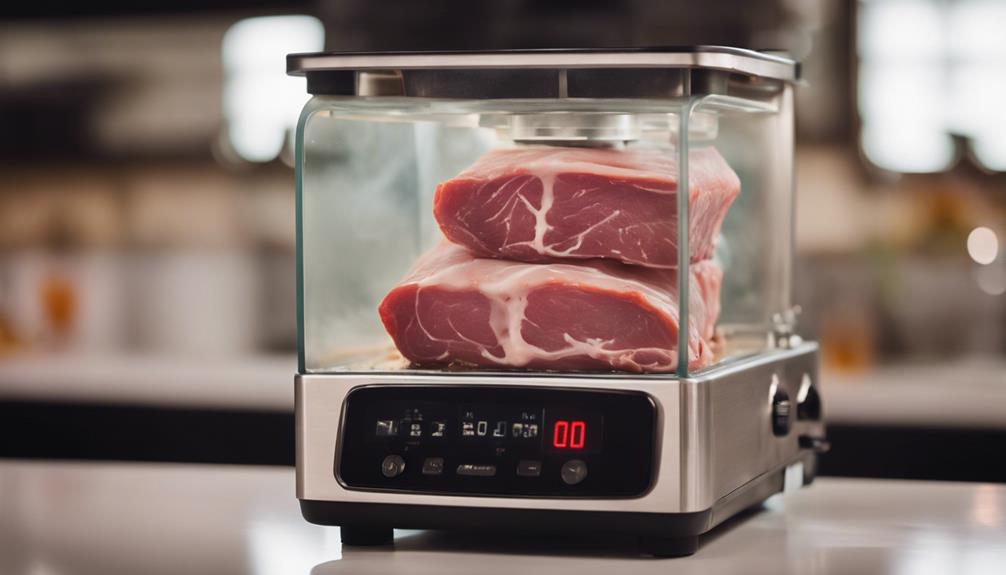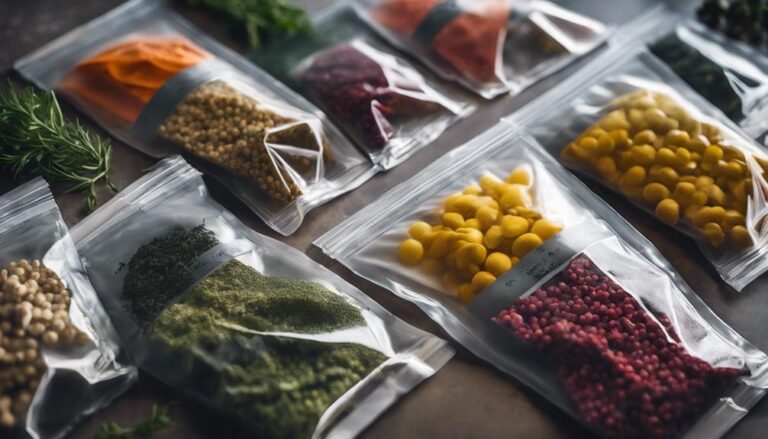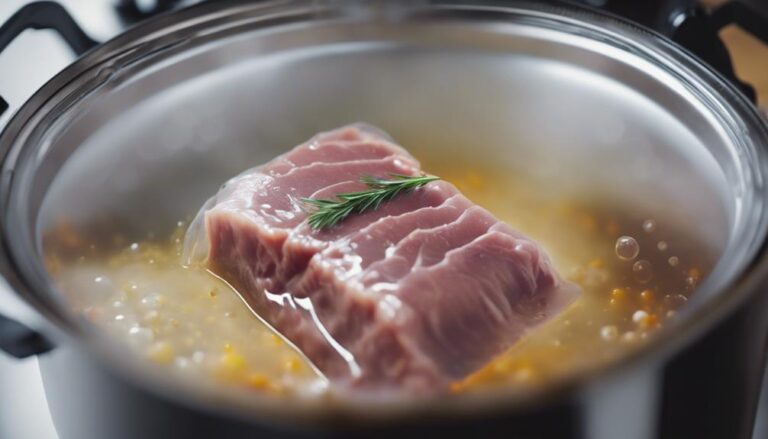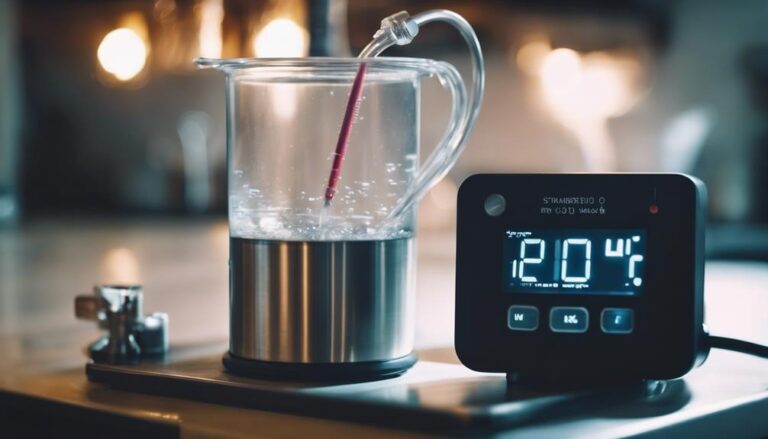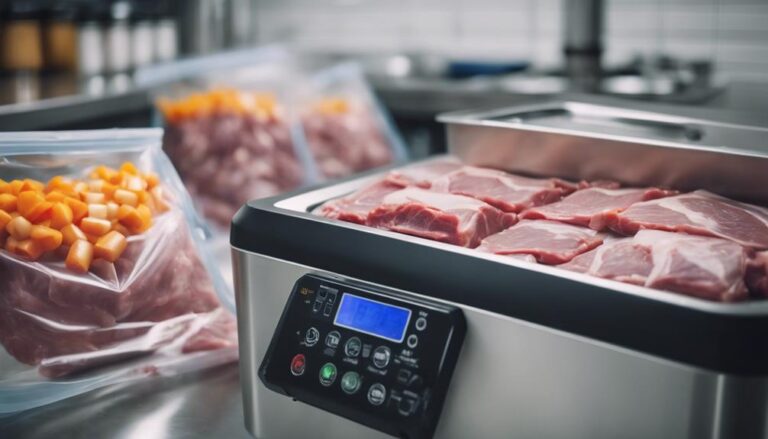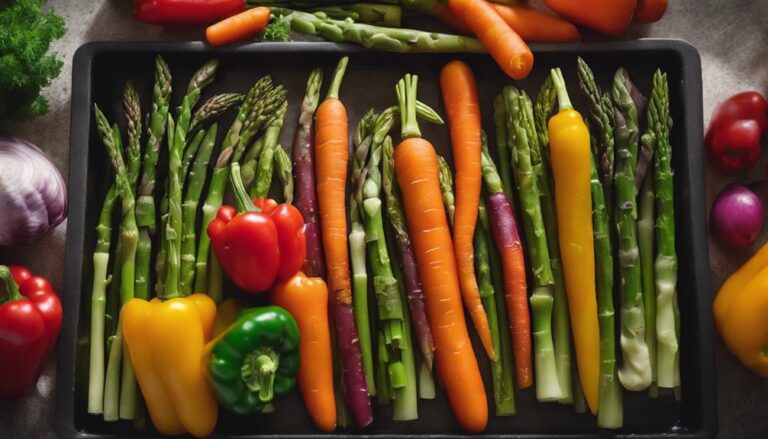Combining Pre-Searing and Post-Searing: Best Practices for Sous Vide
Improve your sous vide dishes by combining pre-searing and post-searing techniques. Pre-searing enhances flavors and guarantees even cooking. Post-searing adds texture and convenience. Maximizing both techniques boosts flavor and texture. Monitor temperature closely and pat dry meat for best results. Avoid overcooking and using olive oil beyond its smoke point. Master the art of pre and post-searing for delicious outcomes.
What You Will Learn Here
- Pre-searing reduces temperature gradient, post-searing enhances texture.
- Monitor temperatures closely for optimal searing results.
- Pat dry meat before searing; control heat levels for Maillard reaction.
- Let meat rest post-pre-sear to retain juiciness.
- Combine pre and post-searing for flavorful, evenly cooked dishes.
Benefits of Pre-Searing in Sous Vide
Pre-searing in sous vide cooking greatly enhances the depth of flavor and texture of your dishes. When you apply heat to your meat before the sous vide process, the Maillard reaction kicks in, creating those rich, savory flavors that everyone loves.
This reaction not only adds complexity to the taste but also helps in developing a more intense flavor profile over the extended cooking time. Additionally, by pre-searing, you guarantee that the meat cooks more evenly throughout, as it minimizes the temperature gradient within the protein.
Advantages of Post-Searing in Sous Vide
To further elevate the texture and overall mouthfeel of your sous vide dishes, consider the advantages of post-searing after the cooking process. Post-searing retains the crunchiness and texture of the Sous Vide Meat, enhancing its overall mouthfeel and providing a delightful contrast in every bite. It is a convenient technique for quick searing after the sous vide process, making it ideal for busy cooks who still want to serve flavorful dishes. Achieving great results with post-searing is not only possible but also requires less effort in preparation compared to pre-searing methods. Post-searing works wonders for most cuts of meat, ensuring a flavorful and well-textured final product that will impress those you are serving. Opting for post-searing exclusively saves time and effort, making it a practical choice for many cooking scenarios.
| Advantages of Post-Searing | Sous Vide Meat |
|---|---|
| Retains texture | Convenient |
| Enhances mouthfeel | Flavorful |
| Quick and easy |
Techniques for Combining Pre and Post-Searing
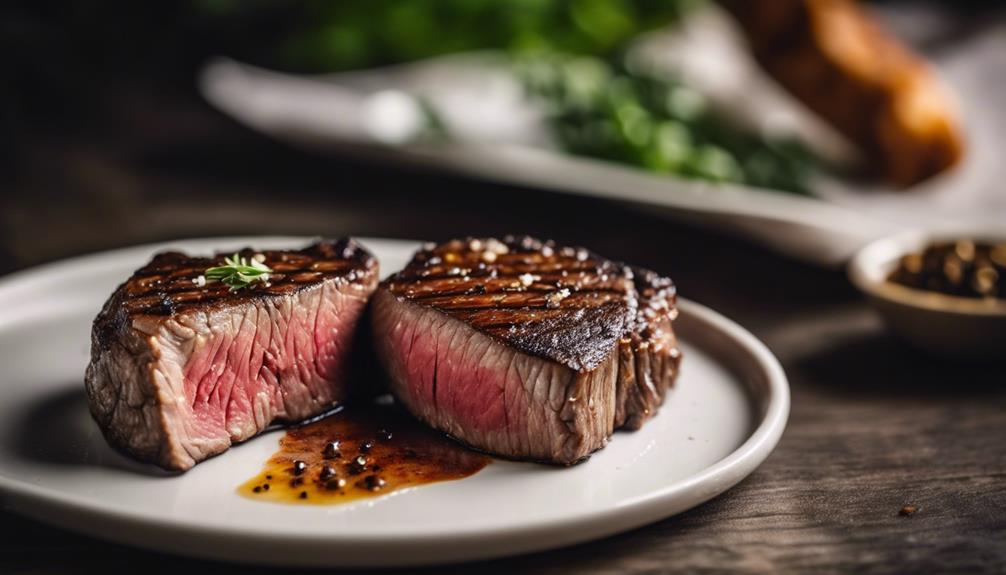
Combining pre-searing with post-searing in sous vide cooking allows you to maximize flavor development and texture while ensuring thorough cooking of your meats. When incorporating both pre and post-searing into your sous vide process, you're enhancing the overall flavor profile of your dish. Pre-searing kickstarts the development of a flavorful crust on your meat and helps in reducing the temperature gradient within the meat, leading to a more consistent cook.
Moreover, post-searing adds that final touch of flavor and texture, providing a satisfying crunchiness to your dish. By combining these techniques, you aren't only ensuring thorough cooking but also elevating the taste and texture of your meat to new heights. The balance between pre and post-searing results in a dish that isn't only flavorful but also visually appealing, making it a perfect choice for serving others and delighting their taste buds. Incorporating both pre and post-searing techniques in your sous vide process guarantees a harmonious blend of flavors that will leave a lasting impression on your diners.
Tips for Achieving Optimal Results
For best results in your sous vide cooking, make sure to carefully control the temperature during the searing process. Here are some tips to help you achieve the best outcomes when combining pre-searing and post-searing techniques:
- Monitor Temperature: Keep a close eye on the heat levels when pre-searing to make sure you achieve the desired Maillard reaction without overcooking the meat.
- Pat Dry Before Searing: Before pre-searing, make sure the meat's surface is dry to allow for better browning and flavor development.
- Rest Before Post-Searing: After sous viding, let the meat rest for a few minutes before post-searing to prevent moisture loss and ensure a juicy final product.
Common Mistakes to Avoid
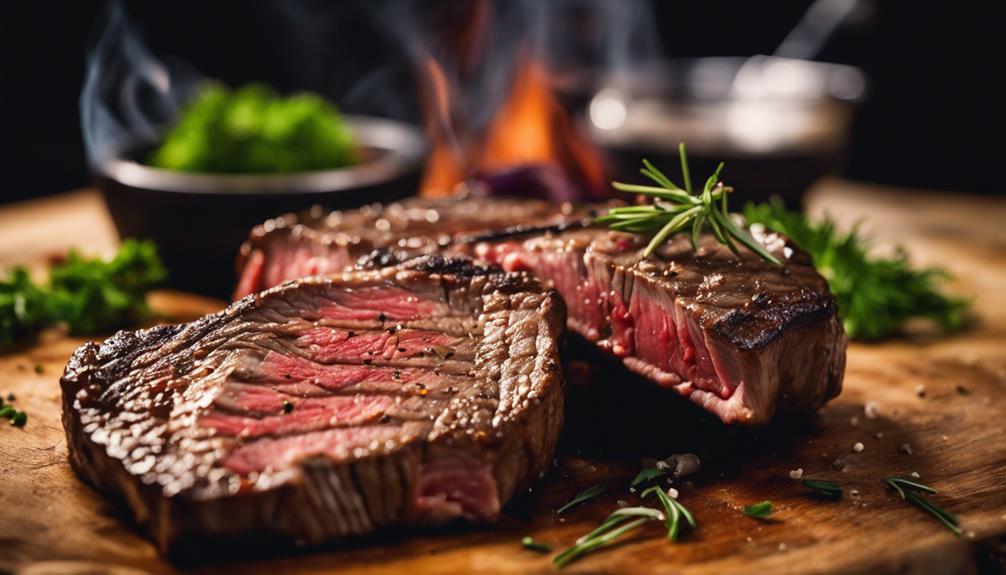
When pre-searing for sous vide cooking, be careful of overcooking the meat to avoid compromising the desired texture and flavor. Overexposure to high heat before the sous vide process can result in a tougher and drier outcome. Additionally, failing to sear at the end of the cooking process can lead to a lack of Maillard reaction and less flavorful meat. It is crucial to strike the right balance to achieve the perfect sear without sacrificing the quality of the meat.
To help you navigate the common mistakes in pre-searing and post-searing, consider the following table:
| Common Mistakes to Avoid | How to Prevent |
|---|---|
| Overcooking during pre-searing | Monitor the time and temperature carefully to prevent overcooking. |
| Skipping pre-searing for long cooks | Pre-sear meat for long cooks to eliminate bacteria risks. |
| Using olive oil past its Smoke Point | Choose oils with higher smoke points for searing to avoid a burnt taste. |
Frequently Asked Questions
Can You Sear First and Then Sous Vide?
Yes, you can sear first and then sous vide. This method, known as the reverse sear, offers benefits like enhanced flavor development and texture preservation. Searing techniques before sous vide can elevate your dish considerably.
Should You Let Sous Vide Rest Before Searing?
You should let sous vide rest before searing to enhance flavor development and maintain moisture. Allowing a brief resting time post sous vide guarantees better texture and juiciness, while also preventing overcooking when searing.
Do You Brown Meat Before or After Sous Vide?
For the best results in sous vide cooking, brown meat before and after sous vide. This technique enhances flavors and textures, creating a delicious crust and maximizing flavor development. It's a key step in mastering sous vide techniques and cooking methods.
Can You Sous Vide Chicken Then Sear Later?
Yes, you can sous vide chicken and sear it later for a tasty finish. By cooking it sous vide first, you lock in juices and flavors. Searing afterward adds a crispy crust and boosts flavor and texture. Enjoy the best of both worlds!
Conclusion
To sum up, combining pre-searing and post-searing in sous vide cooking can enhance the flavor and texture of your dishes to new levels. By utilizing both techniques, you can achieve a beautifully seared exterior and perfectly cooked interior.
Remember to follow the best practices and tips outlined to guarantee excellent results. Avoiding common mistakes will help you create restaurant-quality meals in the comfort of your own kitchen.
Embrace the art of sous vide and elevate your culinary skills today.
